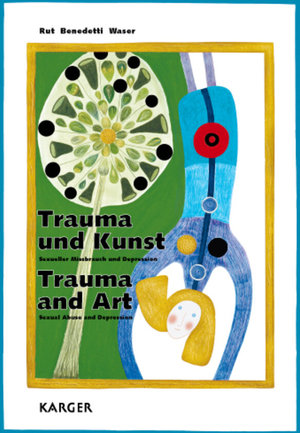
Trauma und Kunst / Trauma and Art
Sexueller Missbrauch und Depression / Sexual Abuse and Depression
von Rut, G. Benedetti, G. WaserSexueller Missbrauch und seine Geheimhaltung stellen Ordnung und Werte eines Opfers auf den Kopf. Diese schwere seelische Notlage kann zu Schutzreaktionen wie seelischer Spaltung, Reifungsstörungen und Depressionen führen. Dieses aussergewöhnliche Buch spiegelt die seelische Aufarbeitung in dem bildnerischen Werk wider, das Rut, selbst Opfer schweren sexuellen Missbrauchs in der Kindheit, im Laufe ihrer Psychotherapie geschaffen hat. Sprachlos in ihrem depressiven Leiden gelingt es ihr so, ihre Kindheitsgeschichte wiederzufinden, sie im Dialog mit dem Psychotherapeuten ins Leben zurückzuholen und in ihren Alltag zu integrieren. Ruts Bilder und Texte sind unmittelbares Zeugnis des Traumas sexuellen Missbrauchs; sie machen es wahrnehm- und einfühlbar, zeigen die seelischen Folgen auf und verweisen gleichzeitig auf einen Weg, das Trauma aufzuarbeiten. Im zweiten Teil des Buches setzen sich die Co-Autoren, beide Psychotherapeuten, mit dem Gestaltungsprozess und dem Bildwerk kunsttherapeutisch und wissenschaftlich auseinander und vermitteln theoretische Bezüge, ohne jedoch zu interpretieren. Dieses einmalige Buch zeigt auf eindrückliche Weise den seelischen Heilungsprozess Ruts und ist für Fachleute und Studierende der Psychologie, Psychotherapie, Psychiatrie und Medizin, der künstlerischen Therapieformen und Pädagogik, der Sozialarbeit und der Seelsorge von grösstem Interesse. Finding a way to communicate a traumatizing experience Sexual abuse and the thus incurred enforced secrecy turn a victim’s values and sense of order upside down. This severe psychological trauma may lead to defensive reactions such as a split personality, disturbed maturation process and depression. This extraordinary book documents the therapeutic journey taken by Rut, a childhood victim of sexual abuse, from her suppressed childhood pain to her artistic expression of the trauma. Her pictorial work created during her psychotherapy enables her in her speechlessness and depression to recapture the story of her childhood, and, in dialogues with her psychotherapist, to integrate it into her everyday life. Rut’s pictures and texts give direct evidence of the trauma of sexual abuse; they make it perceptible, arouse empathy, demonstrate its psychological consequences, and at the same time show a way to work through the trauma. In the second part of the book the two co-authors, both psychotherapists, discuss the creative process and pictorial work in an arttherapeutical and scientific setting, thus establishing a theoretical background. Unique and impressive, this book delineates part of Rut’s psychological healing process, and is of great interest to professionals and students in psychology, psychotherapy, psychiatry and medicine, as well as art therapy, education, social work and spiritual counseling. (A Karger "„Publishing Highlights 1890–2015“" title.)






